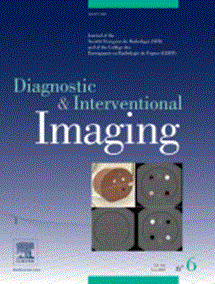Mineralized tissue visualization with MRI: Practical insights and recommendations for optimized clinical applications
IF 8.1
2区 医学
Q1 RADIOLOGY, NUCLEAR MEDICINE & MEDICAL IMAGING
引用次数: 0
Abstract
Magnetic resonance imaging (MRI) techniques that enhance the visualization of mineralized tissues (hereafter referred to as MT-MRI) are increasingly being incorporated into clinical practice, particularly in musculoskeletal imaging. These techniques aim to mimic the contrast provided by computed tomography (CT), while taking advantage of MRI's superior soft tissue contrast and lack of ionizing radiation. However, the variety of MT-MRI techniques, including three-dimensional gradient-echo, ultra-short and zero-echo time, susceptibility-weighted imaging, and artificial intelligence-generated synthetic CT, each offer different technical characteristics, advantages, and limitations. Understanding these differences is critical to optimizing clinical application. This review provides a comprehensive overview of the most commonly used MT-MRI techniques, categorizing them based on their technical principles and clinical utility. The advantages and disadvantages of each approach, including their performance in bone morphology assessment, fracture detection, arthropathy-related findings, and soft tissue calcification evaluation are discussed. Additionally, technical limitations and artifacts that may affect image quality and diagnostic accuracy, such as susceptibility effects, signal-to-noise ratio issues, and motion artifacts are addressed. Despite promising developments, MT-MRI remains inferior to conventional CT for evaluating subtle bone abnormalities and soft tissue calcification due to spatial resolution limitations. However, advances in deep learning and hardware innovations, such as artificial intelligence-generated synthetic CT and ultrahigh-field MRI, may bridge this gap in the future.
利用磁共振成像观察矿化组织:优化临床应用的实用见解和建议。
增强矿化组织可视化的磁共振成像(MRI)技术(以下简称 MT-MRI)正越来越多地应用于临床实践,尤其是肌肉骨骼成像。这些技术旨在模仿计算机断层扫描(CT)提供的对比度,同时利用核磁共振成像卓越的软组织对比度和无电离辐射的优势。然而,MT-MRI 技术种类繁多,包括三维梯度回波、超短和零回波时间、感度加权成像和人工智能生成的合成 CT,每种技术都有不同的技术特点、优势和局限性。了解这些差异对于优化临床应用至关重要。本综述全面概述了最常用的 MT-MRI 技术,并根据其技术原理和临床用途进行了分类。讨论了每种方法的优缺点,包括它们在骨形态评估、骨折检测、关节病相关发现和软组织钙化评估方面的表现。此外,还讨论了可能影响图像质量和诊断准确性的技术限制和伪影,如易感效应、信噪比问题和运动伪影。尽管发展前景广阔,但由于空间分辨率的限制,MT-MRI 在评估细微骨异常和软组织钙化方面仍不如传统 CT。不过,深度学习的进步和硬件创新(如人工智能生成的合成 CT 和超高场磁共振成像)可能会在未来弥补这一差距。
本文章由计算机程序翻译,如有差异,请以英文原文为准。
求助全文
约1分钟内获得全文
求助全文
来源期刊

Diagnostic and Interventional Imaging
Medicine-Radiology, Nuclear Medicine and Imaging
CiteScore
8.50
自引率
29.10%
发文量
126
审稿时长
11 days
期刊介绍:
Diagnostic and Interventional Imaging accepts publications originating from any part of the world based only on their scientific merit. The Journal focuses on illustrated articles with great iconographic topics and aims at aiding sharpening clinical decision-making skills as well as following high research topics. All articles are published in English.
Diagnostic and Interventional Imaging publishes editorials, technical notes, letters, original and review articles on abdominal, breast, cancer, cardiac, emergency, forensic medicine, head and neck, musculoskeletal, gastrointestinal, genitourinary, interventional, obstetric, pediatric, thoracic and vascular imaging, neuroradiology, nuclear medicine, as well as contrast material, computer developments, health policies and practice, and medical physics relevant to imaging.
 求助内容:
求助内容: 应助结果提醒方式:
应助结果提醒方式:


